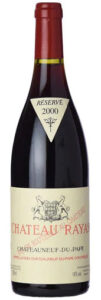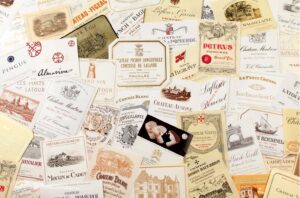
In this post we are highlighting two notable Rhône Valley appellations: Châteauneuf du Pape and Saint Joseph. For more about the regional characteristics and history, differences, and food pairings, be sure to watch the rebroadcast of October 2022 Live Tuesday Tasting event, Taste of Rhone: North vs South.
Châteauneuf du Pape
Tucked away in southeastern France, due north of Avignon, on the eastern banks of the Rhone river sits among the most storied regions within all of Southern France, with a history going back millenia. Châteauneuf du Pape (CdP), was mired in controversy in the mid 20th century, and fell from the good graces of the wine world – overlooked by consumers and critics alike for decades. Yet, beginning in the late 1980’s and early ‘90’s – spearheaded by Beaucastel’s benchmark 1989 bottling, and Rayas’ legendary 1990, CdP began a gradual ascension to the pinnacle of Southern French winemaking, culminating in the region’s historic 2007 vintage.
While only 13 grape varietals are legally allowed to be grown and bottled in the region, Grenache is king. With the baking sun, unique soil structure, and cooling mediterranean winds, it’s a terroir uniquely suited to this variety. Vines are planted in mounds of fist sized rocks named “galets roulés”, which both reflect the intense sunlight back onto the vines, and help maintain warmth throughout the growing season to achieve remarkable phenolic maturity.
As with most regions throughout the old world, winemaking has been starkly divided between traditionalists and modernists, and the middle ground has been largely abandoned. Traditionalists such as Vieux Telegraphe, Beaucastel and Le Vieux Donjon emphasize elegance, acidic balance, and the renowned secondary notes of the region such as herbs de provence, black pepper and forest floor. Modernists such as Clos des Papes and Clos St Jean emphasize intense fruit purity, opulent alcohol and supple tannins.
Regardless of your preference between modern or traditional bottlings, both are opulent with a style wholly unique to both the rest of the Cotes du Rhone, and international Grenache production as a whole.
Saint Joseph
Perched above the river with a southeastern exposure, the vines are kept cool by the mistral, a powerful breeze that shoots north through the valley from the Mediterranean. This helps the berries maintain a vibrant balance without affecting the dark fruit extraction. Saint-Joseph is the second largest appellation under vine in the Northern Rhone, yet more structured and nuanced than its bigger brother Crozes Hermitage.
Most of the esteemed producers source fruit from Saint-Joseph. Here, there seems no division in style, with the hedonistic secondary notes found in Syrah taking showcase. Domaine Faury’s bottlings are among my favorites from the region, showcasing the bountiful olive, dark cherry, blackberry and black pepper I love from Syrah. Chapoutier and E Guigal tend to highlight fruit purity, while Paul Jaboulet finds a wonderful balance between the two.
Saint Joseph in general is a remarkable entry into the world of Northern Rhone syrah. A perfect launching point into the enormous wines of Cote Rotie, the nuance of Hermitage, or hedonistic Cornas.












